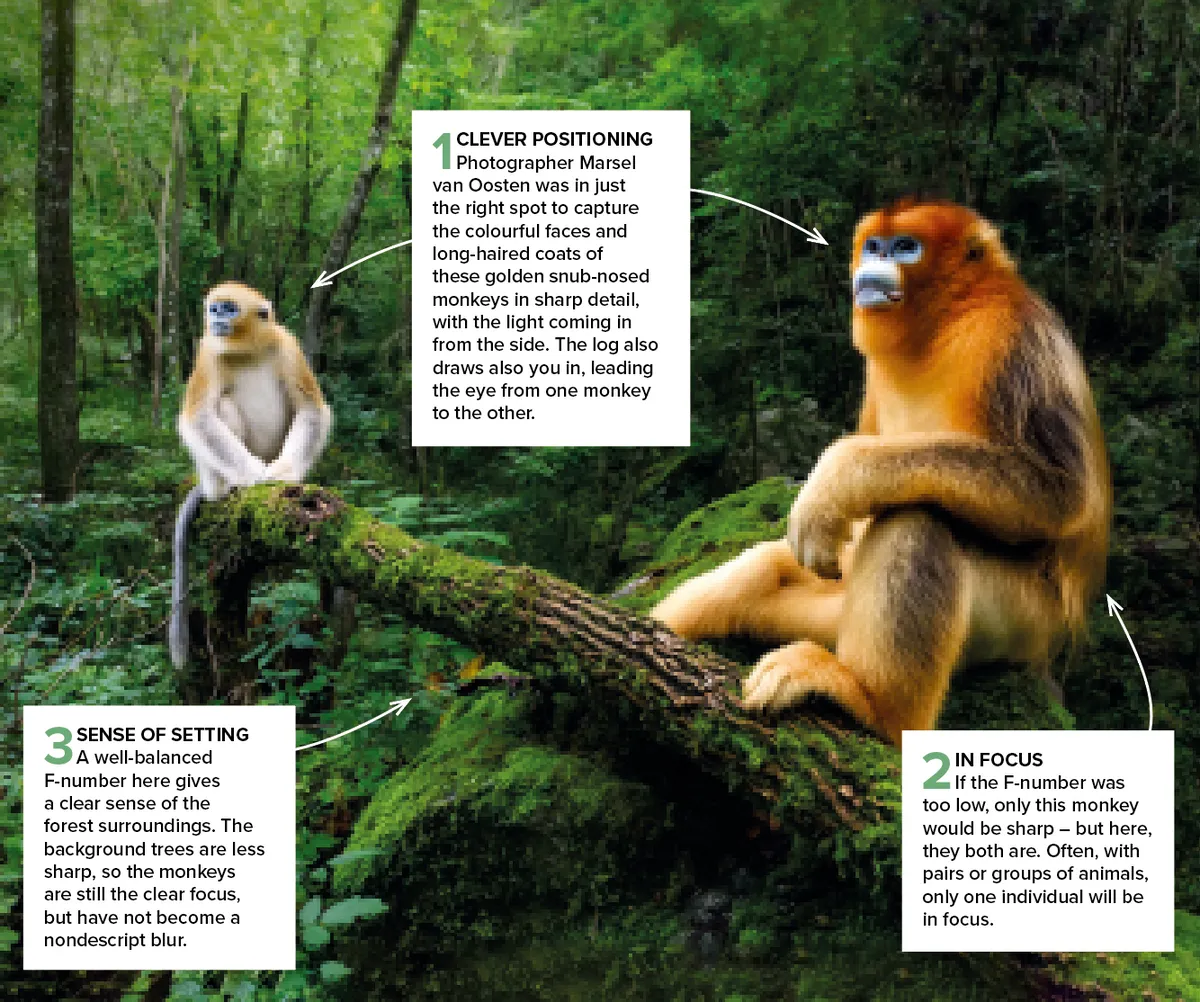It’s possible to take perfectly good photos with a camera in ‘auto’ mode, where the camera makes decisions on settings for you. But to get the results you want and take your photography to the next level, you need to understand your camera’s manual controls – in particular, the ‘Holy Trinity’ of photography: shutter speed, aperture and ISO.
What is shutter speed?
Shutter speed refers to how quickly the camera’s shutter opens and closes. Open it for, say, 1/2,000 of a second and you’ll capture a fast-running cheetah or dive-bombing bird in sharply defined detail, a tiny fraction of a second frozen in time. But open the shutter for longer, such as 1/50 of a second, and the same subjects might end up as blurs. Carefully selecting your shutter speed, rather than trusting it to your camera, means you’re likelier to get the intended outcome.
What does aperture mean?
Aperture refers to how much the hole in the lens opens to allow light onto the sensor, marked on your camera as F-stops or F-numbers. Large apertures, which correspond to low F-numbers (such as F4), allow in a lot of light, while smaller apertures, which have high F-numbers (such as F22), let in less light.
How do F-numbers work?
It’s useful to understand F-numbers in terms of depth of field. A low F-number gives a shallow depth of field, meaning, for example, that if you focus on an orangutan, the orangutan might be sharp but the forest background would be blurry. With a high F-number on the same shot, not only would the ape be in focus, but the leaves and branches in the forest would be too.
Where you set your F-number can affect portraits in different ways – a low F-number might mean a warthog’s snout is sharp but its eyes, ears and body are less well-defined. F-numbers offer lots of creative options.
What is ISO
ISO refers to the camera’s sensitivity to light. In sunny or brightly lit situations, low ISOs, such as 100, work fine. But in low light or dusky situations, you’ll want to ramp the ISO up (to 5,000, 6,000 or higher). But beware of pushing too far, as higher ISOs are more likely to produce photos that are grainy or ‘noisy’.
All three – shutter speed, aperture, ISO – interact with one another, and the exact way you use them will determine how your photos turn out. You won’t get the best from your camera, or yourself as a photographer, without using these manual settings. The best way to get your head around them is to go out and experiment and make notes about how different photos look with, for example, a really high or low F-number.
What is White Balance?
White Balance adjusts the warmth and coolness of an image. The default setting is Auto White Balance, but experiment with some of the manual alternatives. ‘Cloudy’, for instance, warms your subject and thus enriches autumn colours; ‘Tungsten’ has a cooling effect.
How to avoid making common mistakes
Photos that ‘pop’ often do so because a low F-number has been used to make the subject stand out against a blurry background. But this can sometimes feel overdone. I would suggest a balance, where the subject is the clear focus but the background also feeds into the picture. A low F-number can also mean losing sharpness further back on an animal’s face. Choose what works for you, but a low F-number isn’t always the best option.
Nailing the right shutter speed, F-number and ISO can be tricky, especially in fast-moving situations or shifting light conditions. But you don’t always have to do everything yourself. Many cameras allow you to decide shutter speed or F-number (or both), while deciding the correct ISO for you, based on the settings you’ve chosen. Alternatively, you can select a shutter speed and let the camera choose the best F-number. This can help you find the right combination more quickly.
